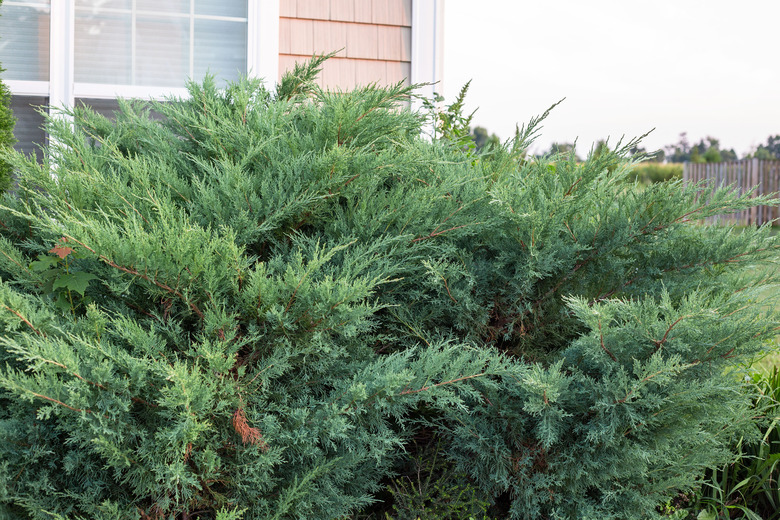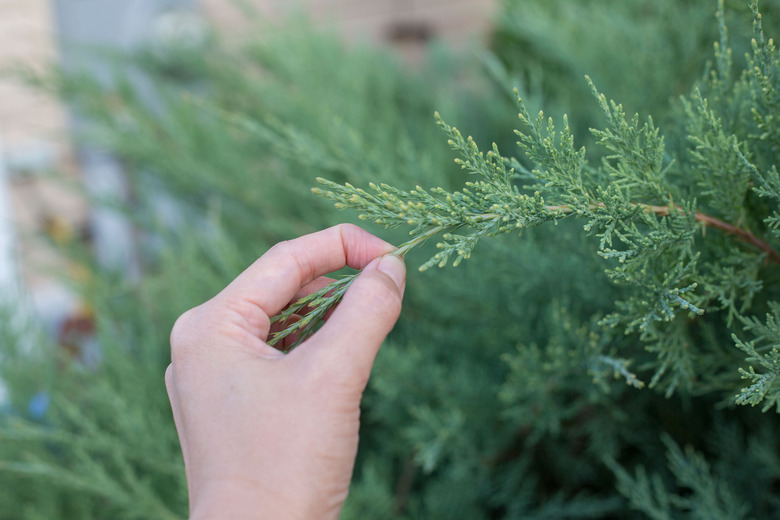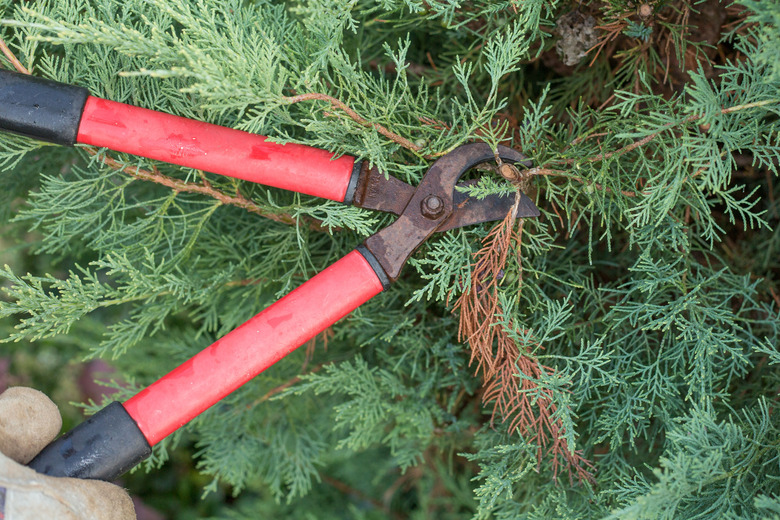How To Trim Juniper Shrubs
Pruning junipers (Juniperus spp.) is rarely needed unless the shrub has dead or sparse growth. Dozens of varieties of juniper exist, from columnar varieties of common juniper (Juniperus communis) to sprawling, low-growing cultivars of Chinese juniper (Juniperus chinensis), both of which grow well in U.S. Department of Agriculture plant hardiness zones 4 to 8.
What Pruning Junipers Is and Isn't Good For
Pruning juniper shrubs and trees is mainly about removing dead branches and improving air circulation among the branches, but it can also encourage more lush growth.
One thing for which pruning cannot be used is to control the size of junipers because pruning the leader branch that gives the shrub its height will destroy its shape and lead to brittle, breakable growth.
When to Prune Junipers
Timing matters when it comes to pruning juniper shrubs. **Early spring before new growth emerges is the best time to prune these resilient shrubs,** but they can be pruned to encourage thicker growth virtually any time from mid-spring until early autumn. Pruning away dead branches can be done when they appear throughout the year.
It is best not to prune junipers during the hottest part of the summer because they may exude too much sap in the heat, and they should not be pruned in the dead of winter when temperatures are below freezing, because the cuts may not heal properly.
Things Needed
- Pruning shears
- Stiff brush
- Paper towel
- Disinfectant cleaner
How to Clean Your Pruning Tools
Junipers are susceptible to a range of disease and pest problems, from twig dieback and rust to spider mites and scale. Many of these issues can pass between plants on dirty pruning shears, so it is important to keep your pruning tools clean and sanitary to prevent their spread.
First, sharpen your shears because sharp shears will produce a cleaner cut that is less damaging to the plant. Badly damaged shears should be replaced entirely if possible.
Wash your pruning shears in hot, soapy water with a stiff brush. Rinse off the soapy water and wipe the blades dry with a paper towel.
The blades can be sprayed down with full-strength disinfectant cleaner or soaked for 20 minutes in a 10-percent bleach solution. There is no need to rinse the blades when using disinfectant cleaner, but bleach solution should be rinsed off, because it will corrode the metal blades.
Do not mix cleaning chemicals, because doing so can cause poisoning.
How to Prune Junipers
Junipers have what is called a "dead zone" on the interior of their foliage where no needles form. **The bare branches inside a juniper will not produce new growth, so it is vitally important not to prune into the dead zone, or the tree will have permanent bare patches.**
- To improve air circulation in a juniper shrub, prune away any dead growth from the bottom of the crown.
- Remove dead branches as needed throughout the year.
- Cut off the dead branch roughly 1/2 inch from the trunk and make the cut at a slight angle.
- Junipers with lanky growth can be tip-pruned to encourage new growth. Snip off the tips of upward-growing branches at a 45-degree angle.
- Single out branches that are very skinny rather than shearing the entire shrub, which can destroy its natural shape.
- Only 1 to 2 inches of growth need to be removed to produce a good result when tip-pruning juniper shrubs.
- Remember not to cut back to the bare portion of the branch because new growth will not form on old wood.
Warning
Junipers growing in shade should not be pruned at all because of their low growth rate.


